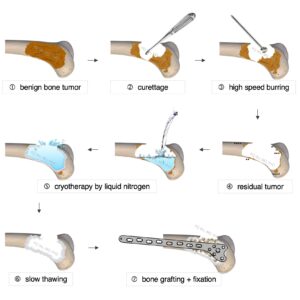Description
Familiarity with treatment
A mini thigh lift is a surgical procedure that focuses on addressing sagging skin in the upper-inner part of the thigh. Here is an explanation of the procedure based on the information from the search results:
Anesthesia: The procedure begins with the administration of anesthesia to ensure the patient’s comfort during the surgery. The options for anesthesia include intravenous sedation and general anesthesia, and the choice depends on the patient’s specific needs and the surgeon’s recommendation.
Incision: A mini thigh lift involves making small incisions in the groin area. These incisions are strategically placed to minimize scarring and are typically well-hidden within the natural creases of the body.
Fat Removal: Once the incisions are made, a thin tube called a cannula is inserted through the incisions. The cannula is used to remove excess fat from the targeted area. This step helps to contour the thighs and reduce the appearance of dimples or bumps caused by isolated pockets of fat.
Skin Removal: After the fat removal, the loose skin is surgically excised using a scalpel. The amount of skin removed depends on the individual patient’s needs and desired outcome. The remaining skin is then carefully repositioned and tightened to achieve a smoother and more toned appearance.
Closure: The incisions are closed with sutures, and the surgeon may apply dressings or bandages to protect the incision sites. The patient may also be instructed to wear a compression garment to minimize swelling and support the new contour of the thighs during the healing process.
Recovery: Following the mini thigh lift, patients are advised to limit their activities for the first few weeks to allow for proper healing. The recovery period may vary depending on the individual and the extent of the procedure. It’s important to follow the postoperative care instructions provided by the surgeon to ensure optimal healing and results.
Who is it suitable for?
A mini thigh lift is suitable for individuals who have a relatively small amount of excess skin and fat in the upper-inner part of the thigh. It is recommended for those who do not require extensive correction and want to focus on trimming and contouring that specific area. Here are some key points about the suitability of a mini thigh lift based on the information from the search results:
Excess Skin: A mini thigh lift is ideal for individuals who have mild to moderate sagging or excess skin in the upper-inner part of the thigh. It can help improve the appearance of loose or sagging skin in this specific area.
Minimal Fat Deposits: This procedure is suitable for individuals who have minimal excess fat deposits in the upper-inner thigh area. If significant fat removal is required, liposuction may be combined with the mini thigh lift to achieve the desired results.
BMI Consideration: Patients with a body mass index (BMI) of less than 30 are generally considered suitable candidates for a mini thigh lift. This criterion helps ensure that the patient’s overall health and weight are within a range that minimizes potential risks and complications.
Specific Treatment Area: The mini thigh lift targets the upper-inner part of the thigh. It is not designed to address sagging or excess skin in other areas, such as the outer thighs or buttocks. If there is excess skin in multiple areas, a different type of thigh lift may be more appropriate.
Realistic Expectations: It is important for individuals considering a mini thigh lift to have realistic expectations about the outcomes. While the procedure can provide a smaller, smoother appearance with minimal bumps and dents, it may not be suitable for individuals with significant skin laxity or excess fat in the thigh area.
Who is it not suitable for?
A mini thigh lift may not be suitable for everyone. Here are some factors that may make a person not suitable for a mini thigh lift procedure:
Significant Weight Loss: If an individual has recently undergone significant weight loss, they may have a larger amount of excess skin and fat in the thigh area. In such cases, a mini thigh lift may not provide sufficient correction, and a more extensive thigh lift procedure may be recommended.
Severe Skin Laxity: Individuals with severe skin laxity or a large amount of loose, hanging skin in the thigh area may not be suitable candidates for a mini thigh lift. A more extensive thigh lift procedure, such as a traditional or vertical thigh lift, may be more appropriate to address the excess skin.
High BMI: Individuals with a high body mass index (BMI) may not be ideal candidates for a mini thigh lift. It is generally recommended that patients have a BMI below 30 to minimize the risk of complications and achieve optimal results. If weight loss is required, it is advisable to reach a stable and healthy weight before considering a thigh lift procedure.
Unrealistic Expectations: It is important for individuals considering a mini thigh lift to have realistic expectations about the outcomes. The procedure can improve the appearance of the upper-inner part of the thigh, but it may not provide significant changes for individuals with more extensive concerns or those seeking dramatic results.
Medical Conditions: Certain medical conditions or factors, such as poor overall health, uncontrolled diabetes, certain autoimmune disorders, or bleeding disorders, may make a person not suitable for a mini thigh lift or any surgical procedure. It is important to discuss any pre-existing medical conditions with a qualified plastic surgeon to determine if it is safe to undergo the procedure.
Advantages
Based on the information from the search results, here are some potential advantages of a mini thigh lift:
Focused Correction: A mini thigh lift specifically targets the upper-inner part of the thigh. It is suitable for individuals who have a relatively small amount of excess skin and fat in this area. The procedure allows for precise contouring and trimming of the targeted region.
Minimal Incisions: Compared to other types of thigh lifts, a mini thigh lift involves fewer incisions. Typically, only a small incision is made in the groin area. This results in smaller, more discreet scars that are often well-hidden within the natural creases of the body.
Smaller, Smoother Appearance: The mini thigh lift can provide a smaller and smoother appearance to the upper-inner thigh area. Excess fat is removed through liposuction, and loose skin is surgically excised and tightened. This can result in a more toned and contoured appearance with minimal bumps and dents.
Less Downtime: Due to the less extensive nature of the procedure, a mini thigh lift may involve a shorter recovery period compared to other types of thigh lifts. However, the exact recovery time can vary depending on individual factors and the extent of the procedure.
Improved Self-Confidence: For individuals who are self-conscious about the appearance of their upper-inner thighs, a mini thigh lift can help improve self-confidence and body image. The procedure can provide a more proportionate and aesthetically pleasing contour to the thighs.
Complications
Based on the information from the search results, here are some potential complications associated with a thigh lift procedure:
Wound Dehiscence: Wound dehiscence refers to the separation or opening of the incision site. It can occur in a high percentage of patients undergoing thigh lift surgery, regardless of the specific procedure performed 1.
Seroma: Seroma is the accumulation of fluid under the skin at the surgical site. It is a common complication associated with thigh lift surgery 1.
Scar Migration: Scar migration refers to the movement or spreading of scars beyond the intended area. It can occur as a complication of thigh lift surgery.
Scar Infection: Infection at the incision site is another potential complication of thigh lift surgery 2.
Hematoma: Hematoma is the collection of blood under the skin at the surgical site. It can occur as a complication of thigh lift surgery.
Lymphedema: Lymphedema is the swelling of the affected limb due to the accumulation of lymphatic fluid. It can be a rare but serious complication of thigh lift surgery 2.
Gaping Vulva: Gaping vulva refers to the separation or widening of the vaginal opening. It is a potential complication associated with thigh lift surgery.
preoperative care
Preoperative care is an essential part of preparing a patient for surgery and ensuring their safety and well-being throughout the surgical process. While the specific preoperative care protocols may vary depending on the surgical procedure and the healthcare facility, here are some general aspects of preoperative care based on the information from the search results:
Medical Assessment: Before surgery, a healthcare provider will assess the patient’s overall health and fitness for the procedure. This assessment may include a review of the patient’s medical history, physical examination, and possibly additional tests or consultations with specialists if needed.
Patient Education: Patients are provided with information about their upcoming surgery, including details about the procedure, potential risks and benefits, expected outcomes, and postoperative care instructions. This education helps patients understand what to expect and actively participate in their own care.
Preoperative Testing: Depending on the patient’s medical condition and the type of surgery, various preoperative tests may be conducted. These tests can include blood work, imaging studies, electrocardiogram (ECG), and other diagnostic assessments to ensure the patient is in the best possible condition for surgery.
Medication Management: The healthcare team will review the patient’s current medications and make any necessary adjustments or recommendations. This may involve discontinuing certain medications that could interfere with the surgery or prescribing medications to optimize the patient’s health before the procedure.
Preparation for Anesthesia: If the surgery requires anesthesia, the patient will be evaluated by an anesthesiologist or nurse anesthetist. This evaluation helps determine the most appropriate anesthesia technique and ensures the patient is prepared for the anesthesia process.
Preoperative Fasting: Patients are typically instructed to refrain from eating or drinking for a specific period before the surgery. This fasting period helps reduce the risk of complications related to anesthesia and surgery.
Consent and Documentation: Informed consent is obtained from the patient or their legal guardian after discussing the risks, benefits, and alternatives of the procedure. All necessary consent forms and documentation are completed before the surgery.
Preoperative Skin Preparation: In some cases, patients may be instructed to shower or cleanse their surgical site with an antiseptic solution before the procedure to reduce the risk of infection.
Postoperative care
Postoperative care is crucial for ensuring proper healing, minimizing complications, and promoting a successful recovery after surgery. While the specific postoperative care instructions may vary depending on the type of surgery and the individual patient, here are some general aspects of postoperative care based on the information from the search results:
Monitoring: After surgery, the patient will be closely monitored in a recovery area or hospital room. Vital signs, such as heart rate, blood pressure, and oxygen levels, will be regularly checked to ensure stability and identify any potential complications.
Pain Management: Adequate pain management is essential for the patient’s comfort and well-being. The healthcare team may prescribe pain medications or recommend other pain management techniques to alleviate any discomfort.
Wound Care: Proper care of surgical incisions or wounds is crucial for preventing infections and promoting healing. The healthcare team will provide instructions on how to clean and dress the wound, as well as when and how to change the dressings.
Activity and Mobility: Depending on the type of surgery, the patient may be advised on appropriate activity levels and mobility. This may involve specific restrictions, such as avoiding heavy lifting or strenuous activities, as well as recommendations for gradual resumption of normal activities.
Diet and Nutrition: The healthcare team may provide guidelines on dietary restrictions or modifications, particularly if the surgery involved the gastrointestinal tract. Adequate hydration and a balanced diet can support healing and recovery.
Medication Management: Patients may be prescribed medications, such as antibiotics or pain relievers, to take during the postoperative period. It is important to follow the prescribed medication schedule and notify the healthcare team of any adverse reactions or concerns.
Follow-up Appointments: The healthcare team will schedule follow-up appointments to monitor the patient’s progress, remove any sutures or staples, and address any concerns or questions. These appointments are crucial for ensuring that the healing process is progressing as expected and to make any necessary adjustments to the postoperative care plan.
Emotional Support: Surgery can be a stressful experience, and emotional support is important during the postoperative period. Patients may benefit from talking to their healthcare team, loved ones, or a counselor to address any emotional or psychological needs.




Reviews
There are no reviews yet.